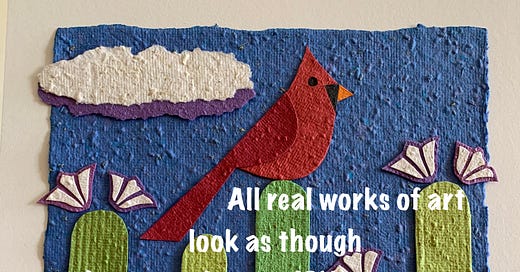Never lose an opportunity of seeing anything beautiful, for beauty is God’s handwriting.
Ralph Waldo Emerson
Have you ever wondered what our lives would be like if we were blind? If we couldn’t see the people and places around us? Or if we had sight but lived on a desolate planet like Mars or Venus? When we stop to think about this beautiful world with its details and intricacies, we cannot help but be filled with wonder. I think this is a clue to understanding our need as humans for beauty, because as part of an environment filled with natural beauty, it only stands to reason that we are enriched when we reflect beauty to each other. I feel the need for beauty is in keeping with our intrinsic need to be in harmony with world around us.
What gift does the beauty in nature offer us? Joy, solace, peace are just some of the many intangible gifts that we receive and that fill the needs in our souls. Other gifts include stress reduction, cognitive health and stimulated curiosity that enrich our brains. And when artists create something of beauty and share it with us, they are in some way reflecting the surrounding and innate beauty of our world. They are offering us a gift that fills needs in a unique and individual sense for each of us because “Beauty lies in the eyes of the beholder.” While a painting draws a quick glance from one observer, it captures the complete attention of another. Brian See Chan, author of The Purple Curtain, explores what beauty is, how it affects us, and believes that “Beauty is an essential quality of reality the human soul needs. Without beauty, the soul dissolves into despair.” (1) He suggests that one reason we need beauty is that it “expresses an ideal which can convey noble tenets under a healthy definition of beauty, giving people a vision of something to look towards and strive for…it stimulates change…and an appetite to be more than what they are presently.”
Visual artists create their “beauty” from looking at the plain or ordinary and seeing a loveliness or honesty. We may see it too, but they have the ability to then interpret the beauty in the world in an inspiring way. My friend Suzanne is a visual artist. She creates “paintings” with her handmade paper. She says that everywhere she goes, when she observes things, she is seeing the beauty but also feeling an emotion. So she is not just observing. She is also trying to figure out how to express what she is feeling about it – not just what she is seeing – when she creates her piece of art.
I asked Suzanne about her creative process. “My creative process, while looking at a scene in nature with cacti or birds or mountains, is trying to break it down into its components – shapes and forms and colors – until it’s just the basics. Then I put it back together in a way that is not realistic, but recognizable and real. Simplified. It’s like a puzzle. Taking individual pieces and making a piece of art that expresses what you’re feeling about it.” With our eye or photographs, we see the real thing. But she says, “You can’t compete with the real thing. So you make something that is not ‘realistic’ but is still ‘real’ and convey it in your art. I like to convey a sense of place and connection to things.” She draws those connections from her own memories and knows that it will bring up memories that others have from something similar. She sees it as a form of storytelling as art stirs memories and others can then imagine their own associations and stories. “I like creating art because you put in a lot of work and thought and in the end you have something you can hold in your hand and see what you accomplished. You hope someone will find joy in too and relate it to their own stories and talk about it with others.”
An artist may also be expressing confusion or inner sadness in a visual form, drawing attention to unspoken pain. In so doing, the artist is offering us a different gift, giving us an avenue to release our own private sorrows or deal with the complexities of life. Meeting common human needs. Perhaps this is why I love the art of M. C. Escher. I love trying to solve mysteries and paradoxes and his work is full of interlocking images or scenes with no beginning or end. Much of the art from the Renaissance, while almost indescribably beautiful, depicts intense spiritual and social upheaval or relational turmoil, many times in minute detail. This can elicit strong emotions from us as we relate in some way to what the artist was hoping to convey.
In big and small ways, art and beauty touch our lives and our ever-changing emotional needs, offering us unexpected and much appreciated gifts.
Watch for an upcoming Gift of Need podcast interview with Suzanne!
1. Chan, Brian S. 2011. The Purple Curtain. Cross House. USA.
Why We Need Beauty. https://brianseechan.com/2017/06/30/why-we-need-beauty





